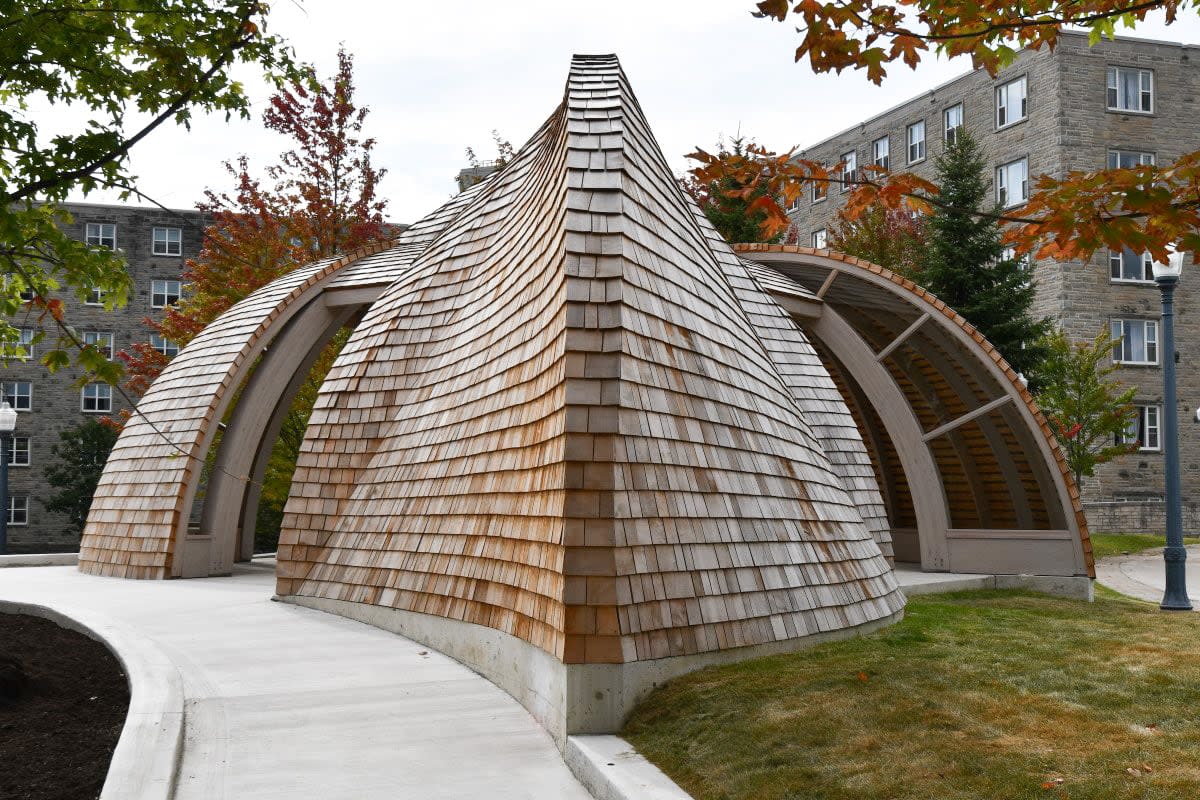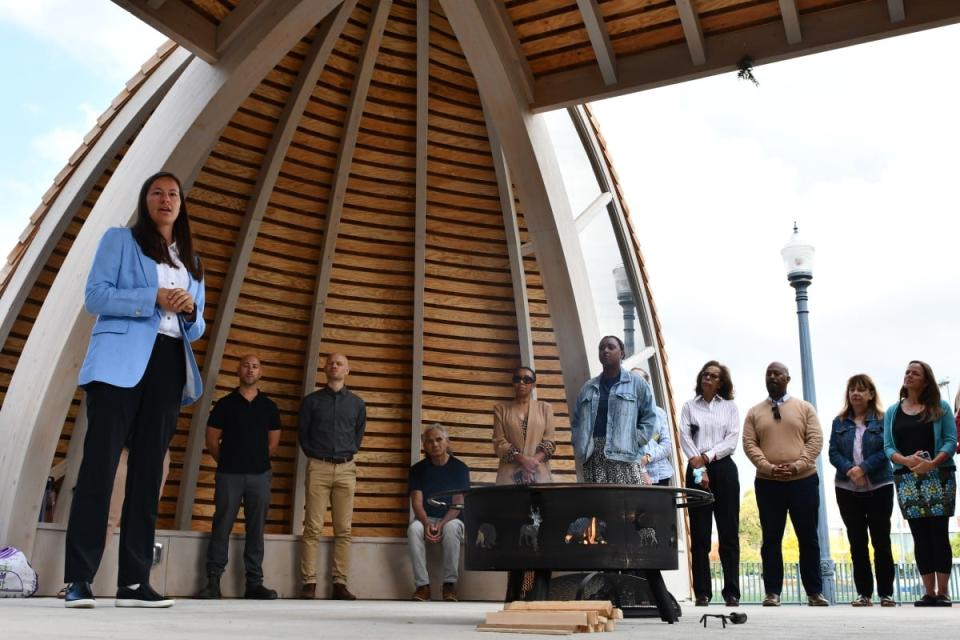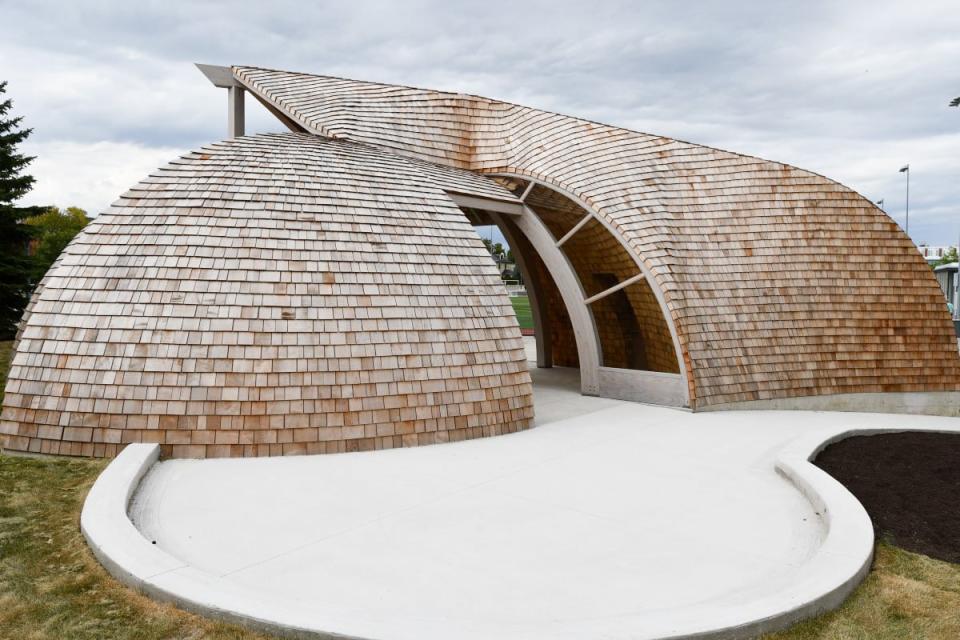New Indigenous space at Queen's aims to 'spark a conversation'

Nestled between the grey stone and red brick buildings that make up Queen's University campus in Kingston, Ont., is a new curved, wooden structure.
The building is an outdoor Indigenous gathering space, and it's meant to offer a way to engage with Indigenous ways of knowing on campus.
It's also made of sustainable materials and is inspired by traditional Anishinaabe roundhouses, said Kandice Baptiste, Queen's senior director of student equity, inclusion and belonging.
"The centre is a circle and so it provides space for us to hold sacred fires there," said Baptiste, who is from Tyendinaga Mohawk Territory, about 60 kilometres west of Kingston.
" And on the outside, it's covered in cedar shakes. So when you enter the space it also smells quite lovely," she recently told CBC Radio's Ontario Morning.
The centre can be entered from any of the four cardinal directions, and Baptiste said there are teachings behind what door you enter and why.
Many Indigenous community members were consulted, she said, to ensure the space was reflective of the territory's history.
A welcoming space
"I consider this to be a gathering space in the same way that, historically, this land has been a gathering place for many Indigenous nations," Baptiste said.
Indigenous people should feel reflected in the university's curriculum and feel welcome on campus, Baptiste said.
"It's important to me that Indigenous students feel like the space is for them because that's the priority," she said.
The building also offers a chance for non-Indigenous students and staff on campus to come together and "spark a conversation" about their experiences.
"Our hope is that all students at Queen's have the ability to learn from and engage with our Indigenous ways of knowing, teaching and learning," Baptiste said.

Kandice Baptiste, Queen's senior director of student equity, inclusion and belonging, speaks at the unveiling of the outdoor structure last week. (Submitted by Queen's University)
Stands out from 'very colonial' architecture
For Kim Mitchell, a second-year medical student at Queen's and Qalipu Mi'kmaq from Newfoundland, the structure stands in stark contrast to the other buildings around campus.
"A lot of the architecture here is very colonial, and this new facility is really set apart. It is so different from anything that surrounds it," she said.
When she was first accepted to medical school at Queen's, Mitchell said she almost hesitated saying yes — in part because of the architecture, which "seemed so cold when I first saw it."
It wasn't until she and her husband toured campus that she realized how welcoming the Indigenous community was. They visited the Four Directions Indigenous Student Centre, where an elder burned tobacco for Mitchell and offered moose stew.
"All of that welcoming and the love and the generosity that we felt that day, I feel every time I look at this new building, so I'm really excited," Mitchell said.

The outdoor gathering space is made of sustainable materials, and is inspired by traditional Anishinaabe roundhouses. (Submitted by Queen's University)
The building is part of Queen's ongoing commitment to truth and reconciliation, and joins several other Indigenous spaces recently opened on campus.
Mitchell said there's still more to be done to address reconciliation on campus, but the new centre is a good step.
"For me, reconciliation is more about, 'How do we move forward together?'" she said.
"And I think this facility is one of those places where you can start having those conversations, in the circular space where no one person is greater than the next."


